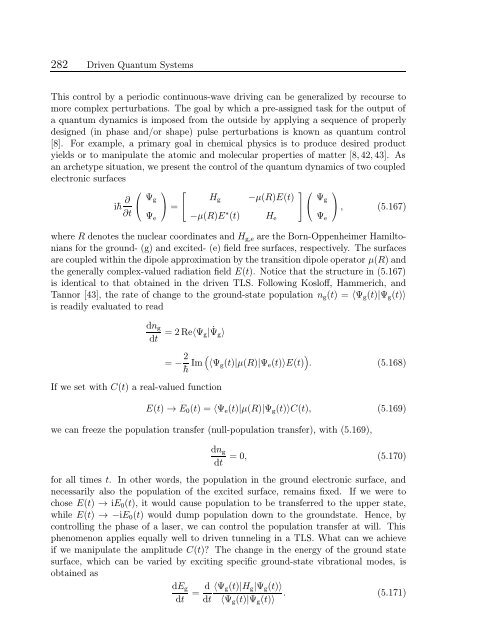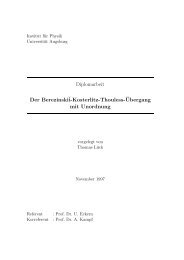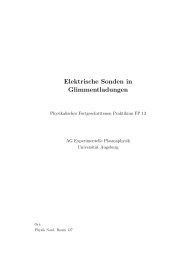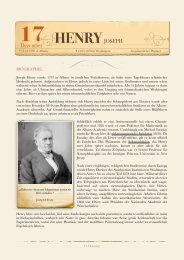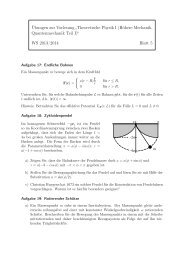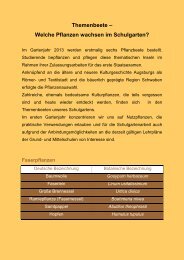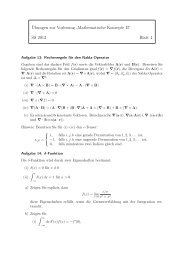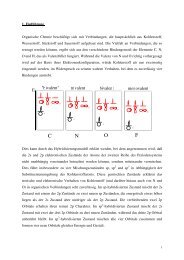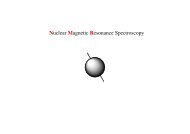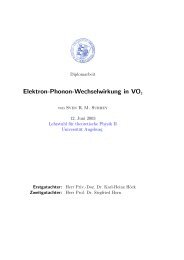Driven Quantum Systems - Institut für Physik
Driven Quantum Systems - Institut für Physik
Driven Quantum Systems - Institut für Physik
You also want an ePaper? Increase the reach of your titles
YUMPU automatically turns print PDFs into web optimized ePapers that Google loves.
282 <strong>Driven</strong> <strong>Quantum</strong> <strong>Systems</strong><br />
This control by a periodic continuous-wave driving can be generalized by recourse to<br />
more complex perturbations. The goal by which a pre-assigned task for the output of<br />
a quantum dynamics is imposed from the outside by applying a sequence of properly<br />
designed (in phase and/or shape) pulse perturbations is known as quantum control<br />
[8]. For example, a primary goal in chemical physics is to produce desired product<br />
yields or to manipulate the atomic and molecular properties of matter [8, 42, 43]. As<br />
an archetype situation, we present the control of the quantum dynamics of two coupled<br />
electronic surfaces<br />
⎛<br />
i¯h ∂ Ψ ⎞ ⎡<br />
⎤ ⎛<br />
g<br />
H g −µ(R)E(t)<br />
⎝ ⎠ =<br />
Ψ ⎞<br />
g<br />
⎣<br />
⎦ ⎝ ⎠ , (5.167)<br />
∂t Ψ e −µ(R)E ∗ (t) H e Ψ e<br />
where R denotes the nuclear coordinates and H g,e are the Born-Oppenheimer Hamiltonians<br />
for the ground- (g) and excited- (e) field free surfaces, respectively. The surfaces<br />
are coupled within the dipole approximation by the transition dipole operator µ(R)and<br />
the generally complex-valued radiation field E(t). Notice that the structure in (5.167)<br />
is identical to that obtained in the driven TLS. Following Kosloff, Hammerich, and<br />
Tannor [43], the rate of change to the ground-state population n g (t) =〈Ψ g (t)|Ψ g (t)〉<br />
is readily evaluated to read<br />
dn g<br />
dt =2Re〈Ψ g|˙Ψ g 〉<br />
If we set with C(t) a real-valued function<br />
=− 2¯h Im ( 〈Ψ g (t)|µ(R)|Ψ e (t)〉E(t) ) . (5.168)<br />
E(t) → E 0 (t) =〈Ψ e (t)|µ(R)|Ψ g (t)〉C(t), (5.169)<br />
we can freeze the population transfer (null-population transfer), with (5.169),<br />
dn g<br />
=0, (5.170)<br />
dt<br />
for all times t. In other words, the population in the ground electronic surface, and<br />
necessarily also the population of the excited surface, remains fixed. If we were to<br />
chose E(t) → iE 0 (t), it would cause population to be transferred to the upper state,<br />
while E(t) →−iE 0 (t) would dump population down to the groundstate. Hence, by<br />
controlling the phase of a laser, we can control the population transfer at will. This<br />
phenomenon applies equally well to driven tunneling in a TLS. What can we achieve<br />
if we manipulate the amplitude C(t)? The change in the energy of the ground state<br />
surface, which can be varied by exciting specific ground-state vibrational modes, is<br />
obtained as<br />
dE g<br />
dt<br />
= d dt<br />
〈Ψ g (t)|H g |Ψ g (t)〉<br />
. (5.171)<br />
〈Ψ g (t)|Ψ g (t)〉


